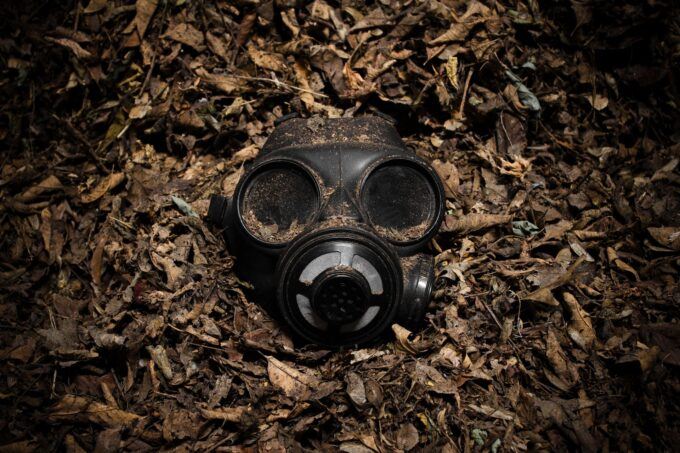
Photo by Scott Rodgerson
$2.24 trillion in US dollars is a mighty amount. It’s also a sickening figure when considering the object of this exercise. The flickering tease of war, the promise of bloodshed and an increasingly large butcher’s bill, are inevitable suggestions from such a figure. The scenes are also clear: well-paid suits dazed by theories of the next war; policy wonks jabbering over mock war games. A huge amount of money is being pushed into the venture, and the sceptics are being held at bay.
Much of this news comes from the Stockholm International Peace Research Institute’s latest findings that countries are spending 2.2% of the world’s gross domestic product on armaments. Of that amount, the United States, China and Russia accounted for 56% of the total. Global military spending, the SIPRI report also notes, grew by 19% over 2013-2022, rising every year since 2015.
The amount is slightly more than the previous year, when SIPRI announced that total military expenditure had risen by 0.7% in real terms in 2021 “to reach $2113 billion.” The largest contributors to the binge on that occasion were the United States, China, India, the United Kingdom and Russia. In sum, the five countries accounted for 62% of expenditure.
This reads differently from the more optimistic International Monetary Institute’s assessment from 2021: “Worldwide military spending, when estimated on the basis of unweighted country averages, has declined by nearly half, from 3.6 percent GDP during the Cold War period (1970-90) to 1.9 percent of GDP in the years following the global financial crisis.” When it comes to variations on the figures in this field, best stick with SIPRA.
2022 proved to be a boon for militarists the world over, though there were particular regions that saw more growth than others. In Europe, levels of spending had reached levels unseen since the Cold War, up from 13% from the previous twelve months. The reason commonly given: Russia’s invasion of Ukraine. In East Asia, the justification is the increasingly hostile US-Chinese rivalry, though those in Washington’s corner are ever pointing the finger to the Yellow Horde’s ambitions in Beijing.
The picture in Europe is an ugly one, with concerns being expressed in certain strategic circles that not enough is being done to move away from dependency on the US imperium. The European Council on Foreign Relations (ECFR) has even posited that Europe is the victim of US “vassalisation”, notably in light of the Ukraine War. Visions of strategic autonomy are more distant than ever.
Such sentiments, however, do little to discourage the militarists: whether Europe chooses to throw in its lot with Washington or not, the arms dealers and manufacturers will do a merry jig. To prove that point, the ECFR advocates the deployment of “western European forces to the east in greater numbers, offering to replace US forces in some cases.” The only difference here is the burden shared, rather than the amount spent.
In terms of individual countries, Finland’s military expenditure rose by 36% in 2022 to reach $4.8 billion, the largest in the country’s year-on-year increase since 1962. Polish military expenditure grew by 11%, reaching $16.6 billion over the course in 2022. The passage of the Homeland Defence Act, designed to reorganise the military and raise defence spending, promises to eventually push the levels to 4% of GDP. Warsaw has made no secret of the fact that it wishes to have the continent’s largest army, a daft and distinctly draining exercise.
The figures are also significant given the increasingly proxy nature of the Ukraine War’s balance sheet. Ukraine, for its part, rose from its position at 36 on the league of arms spenders to 11 in 2022, with a figure of $44 billion. But SIPRI has a modest confession to make: it is unable to furnish us “an accurate assessment of the total amount of financial military aid to Ukraine”. This is largely because the donor countries have, for the most part, not released disaggregated data. A rough estimate of $30 billion is provided, which “includes financial contributions, training and operational costs, replacement costs of the military equipment stocks donated to Ukraine and payments to procure additional military equipment for the Ukrainian armed forces.”
Some of this must be factored into the increased budgets of the UK (top European spender at 3.1%), with Germany and France coming in at 2.5% and 2.4% respectively. Of the three, the UK has given the most military aid to Ukraine, and is second only behind the United States, which allocated $19.9 billion.
As for the US itself, the Biden administration has already mooted the idea that it will increase the number of troops deployed to Europe by 20,000 personnel to 100,000. The measure is part of the European Deterrence Initiative (EDI), an effort to, according to the US Department of Defense, “enhance the US deterrence posture, increase the readiness and responsiveness of US forces in Europe, support the collective defense and security of NATO allies, and bolster the security and capacity of US allies and partners.”
While China, with a bill of $292 billion, is leant upon as an excuse for increased military expenditure by other powers, the United States remains the undisputed premier spender, making up a staggering 39% of the global total at $877 billion. Hardly the sort of figure to be sported by a peacemaker.
This content originally appeared on CounterPunch.org and was authored by Binoy Kampmark.
Binoy Kampmark | Radio Free (2023-05-04T05:58:05+00:00) Preparing for War: the Global Military Budget. Retrieved from https://www.radiofree.org/2023/05/04/preparing-for-war-the-global-military-budget/
Please log in to upload a file.
There are no updates yet.
Click the Upload button above to add an update.